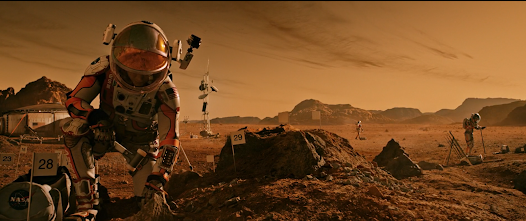- The Moon Landing (1969)
The Apollo 11 mission marked a defining moment for humankind. Neil Armstrong and Buzz Aldrin’s first steps on the Moon represented the triumph of human ingenuity and engineering. This mission was supported by over 400,000 engineers, scientists, and technicians — a feat of coordination and technology. The Apollo program also brought us innovations like miniaturized computers and heat-resistant materials still in use today.
The Hubble Space Telescope (1990)
Orbiting above Earth’s atmosphere, the Hubble Telescope has captured breathtaking images of galaxies, nebulae, and black holes. It helped determine the universe’s age (13.8 billion years) and provided critical data on dark matter and dark energy — concepts reshaping modern astrophysics. Hubble’s modular design also paved the way for long-term space-based observatories.
- International Space Station (ISS) (1998 - present)
The ISS, a joint effort of NASA, Roscosmos, ESA, JAXA, and CSA, serves as a microgravity laboratory. Research here includes protein crystal growth for pharmaceuticals, water purification systems now used in developing countries, and even 3D printing of human tissue. It’s also a testbed for future Mars missions.
- Mars Rovers (2004 - present)
From Spirit and Opportunity to Curiosity and Perseverance, NASA’s Mars rovers have transformed our understanding of the Red Planet. Perseverance is currently searching for signs of ancient life and collecting samples for future retrieval. It even carried Ingenuity, a helicopter that achieved the first powered flight on another planet — an engineering marvel.
- Earth Observation Satellites
NASA’s Earth-monitoring satellites, like Landsat and Aqua, track climate change, deforestation, ocean temperatures, and natural disasters. The data fuels environmental policy worldwide. For instance, the Global Precipitation Measurement mission helps predict floods and droughts more accurately than ever.
- GPS and Navigation Technology
NASA contributed to enhancing the Global Positioning System, improving its accuracy to within centimeters. This tech underpins modern aviation, maritime navigation, and even ride-sharing apps. Without NASA’s work on atomic clocks and orbital calculations, GPS would be far less precise.
Image : A visualization of GPS satellite constellations.
- Medical Breakthroughs
Space research led to countless medical advancements. NASA’s studies on fluid shifts in astronauts contributed to better understanding glaucoma and cardiovascular health. Innovations like LASIK eye surgery technology and portable medical imaging devices trace their roots back to NASA’s space-based research.
Image : Astronauts undergoing health experiments on the ISS.
- Advanced Materials and Aerodynamics
NASA developed lightweight, heat-resistant materials used in airplanes, cars, and even firefighter suits. The iconic memory foam was created to cushion astronauts during liftoff. Plus, NASA’s wind tunnel experiments improved aircraft aerodynamics, increasing fuel efficiency.
Image : Wind tunnel tests on aircraft models.
- Deep Space Exploration
Voyager 1 and 2, launched in 1977, have traveled beyond our solar system, sending back data from interstellar space. More recently, New Horizons gave us the first close-up images of Pluto. These missions remind us how far human ingenuity can reach.
Image : Voyager 1.
- Inspiration and Global Education
NASA’s influence extends far beyond technology. It has inspired generations of scientists, engineers, and dreamers. Programs like Artemis aim to put the first woman and the next man on the Moon, and outreach programs encourage STEM education worldwide.
Image: A diverse group watching a NASA rocket launch.
A Bold Conclusion: The Next Giant Leap
NASA’s legacy is not just written in the Moon’s dust or Mars’ red soil — it’s etched into the very fabric of our civilization. Each satellite, rover, and telescope has pushed the limits of what we believe is possible. As we look to the future — lunar bases, Mars colonies, and perhaps even interstellar travel — NASA continues to redefine the boundaries of human potential.
The question is no longer whether we can reach the stars — it’s how far we’ll go. The next giant leap awaits, and NASA will be at the helm, leading humanity into a future beyond imagination.
Final image: An artistic rendition of a Mars base or an astronaut stepping onto an alien world.
















No comments:
Post a Comment